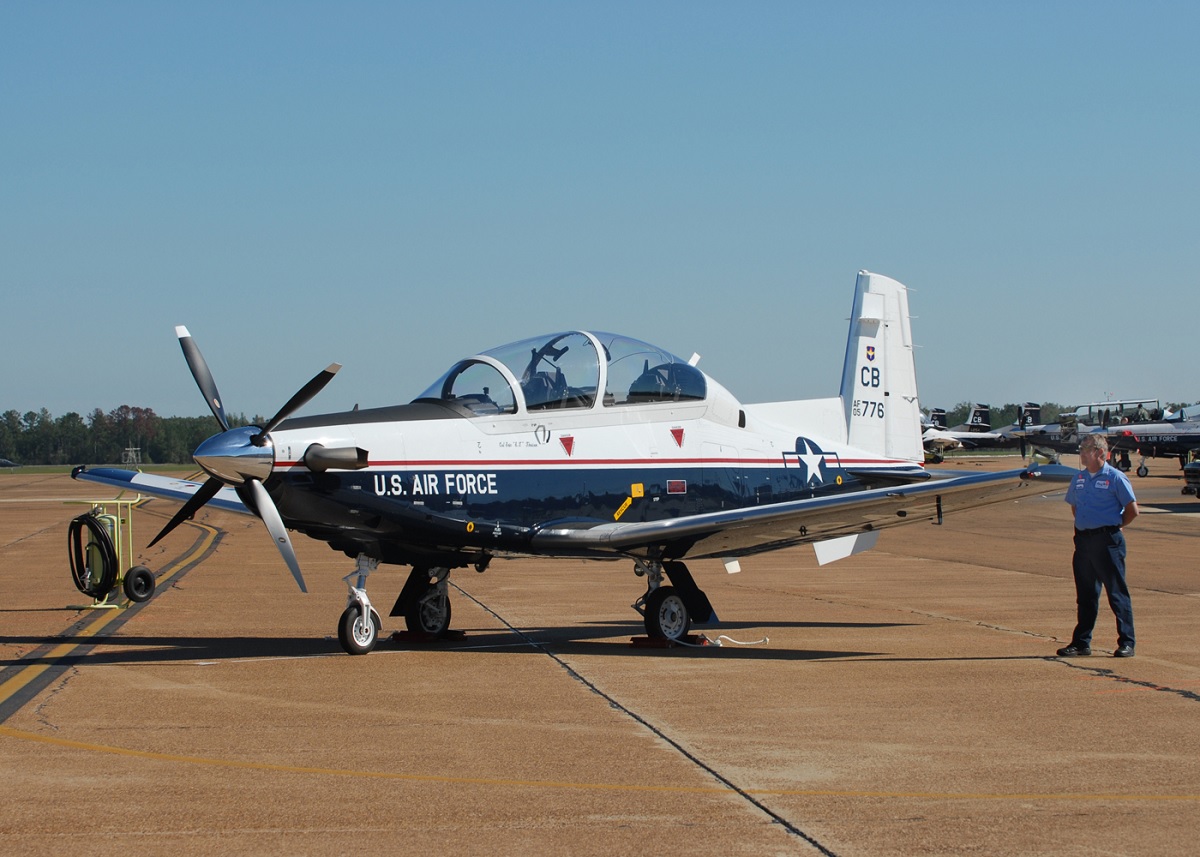Four of five of OBOGS inspected in February were “absolutely horrendous,” containing dirt and gunk, stuck valves and oxygen lines that were kinked or had evidence of water in them
On Feb. 1, the U.S. Air Force (USAF) grounded all 444 of its T-6 Texan II training aircraft at Air Education and Training Command (AETC) bases over concerns about hypoxia, the potentially fatal impairment whose symptoms include odd tastes in the mouth, confusion, and loss of consciousness.
When the service cleared the T-6 fleet to resume flying this month the root cause of the recent sudden spike of unexplained problems that hit pilots with symptoms suggesting oxygen deprivation still couldn’t positively identify.
But, as reported by San Antonio Express-News, while the plane was grounded, investigators uncovered serious issues with the plane’s On-Board Oxygen Generating System (OBOGS).
Officials confirmed 21 unexplained physiological events (PEs) in January. The USAF informed a congressional panel last month that the most such events ever recorded in a single year for the T-6A going back to 2008 was five.
According to Col. Joel Carey, the commander of the 12th Flying Training Wing at Joint Base San Antonio-Randolph, the study was extensive and pointed to “certain parts” of the OBOGS, which now will undergo maintenance much more frequently.
Carey explained in a statement that most of the events occurred in other training wings, but “our portion of the T-6 fleet did exhibit similar maintenance issues that could have led to additional PEs if action was not taken.”
One pilot wrote on the website Flying Squadron Forums that four of five of OBOGS inspected in February were “absolutely horrendous,” containing dirt and gunk, stuck valves, and oxygen lines that were kinked or had evidence of water in them.

The AETC said that inspections have “identified degradation in some of the system components.”
AETC spokeswoman, Marilyn C. Holliday, said in a statement that OBOGS still are being examined, and “given the number of aircraft and parts that need to be inspected, the statistics are changing on an hourly basis,” so an exact failure rate won’t be known until the entire fleet is checked.
Holliday explained that technicians are checking more than 250 parts of each aircrew breathing system, which includes the OBOGS, and repairing or replacing them as needed. After testing the overhauled systems, “several hundred sorties have been flown and the wings are continuing on the path to full scheduling capacity within the next week,” the statement said.
According to the USAF, the recent events are “different from classic hypoxia” but even after the T-6 flights resumed the service has continued to examine the oxygen system, working with Navy, NASA, and industry experts.
“Over the past 10 years, the T-6 has had one of the lowest occurrences of physiological incidents, but they still occurred and will most likely occur in the future,” and must be handled by additional cockpit systems and emergency procedures training, the statement said.
The pilots reporting hypoxia-like events flew earlier this year out of three AETC installations — Columbus AFB, Mississippi; Vance AFB, Oklahoma; and Sheppard AFB in Wichita Falls.
Other USAF fighters and trainer aircraft sometimes have experienced spikes in such incidents over the past 10 years. For instance, the F-22A, one of the service’s newest fighters, had 15 events in the 2012 fiscal year while the F-15C/D, a much older plane, had 20 in the 2016 fiscal year. But for most years and most planes, the incidents are much rarer.

“The T-6 has been an incredible workhorse for the Air Force and has safely flown more than 2 million flight hours, but the aircraft is about a third of the way through its life cycle” and needs smart changes to its maintenance routines, said Maj. Gen. Patrick Doherty, commander of the 19th Air Force at Randolph, in a statement.
Photo by U.S. Air Force

